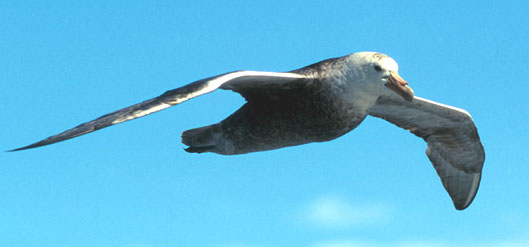
Classification
Petrels belong to the order Procellariiformes. The storm petrels
make up the family Hydrobatidae and the diving petrels the family Pelecanoididae.
The remaining petrels, as well as the fulmars and shearwaters, belong to
the family Procellariidae.
Varieties
Petrel, common name for members of three families of a seabird order:
the storm petrels, diving petrels, snow petrel, cape petrel and many members
of the family that also includes the fulmars and shearwaters.
Appearance
Petrels vary in size from the storm petrel, of which the smallest
species is 14 cm long, to the two giant petrels, which range up to 91 cm
in length and are larger than some albatrosses. They are powerful fliers
with long wings. Their bills are strongly hooked, and their tubular nostrils
are set close together along the top of the bill.
Breeding
Most petrels breed in colonies on islands in the southern hemisphere.
A few of the gadfly petrels breed farther north on islands such as Madeira,
Bermuda, the West Indies, and the Hawaiian Islands. Petrels wander widely
at sea during the nonbreeding season.
Distribution
The Antarctic Petrel can be found everywhere from the cliffs on
the seashore to holes in the Trans-Antarctic Mountains.
